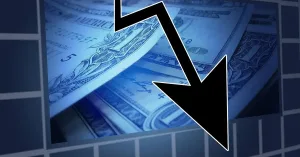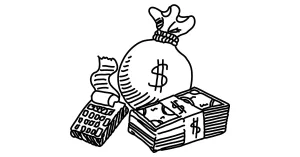Whether you've started a new job and been given a share package or are keen to get into investing, it's essential to understand dividends. After all, they could constitute a beneficial bump to your salary or underline your entire trading strategy.
However, despite being a key concept when it comes to stocks and shares, knowledge of dividends is often taken for granted. If these premiums have left you perplexed, don't worry. In this guide, we'll explore what dividends are, why they're paid out, how you can earn them, and how to use them to your advantage.
What Are Dividends?
When a company makes a profit over a certain period, it may share a portion of that profit among its shareholders. The money that each shareholder receives is known as a dividend. At their most basic, dividends can be seen as a thank-you from a company to a shareholder for investing, and a reassurance that the company is making continual profits.
Types of Dividends
There are five different kinds of dividends that companies may pay, including…
Cash dividends - As the name suggests, these dividends are paid in cash to a shareholder's bank account or, in rarer cases, by check.
Stock dividends - Companies that pay these dividends will give their shareholders even more shares, increasing their stake without the need for further investment.
Property dividends - Think of property dividends as being paid in kind. Instead of receiving money or shares, these dividends come in the form of tangible assets, like a company's products, or intangible assets, like a patent.
Scrip dividends - These dividends are usually paid when a company does not have liquid cash to pay out. Instead, it provides shareholders with a scrip, or voucher, to redeem the dividend in cash or shares at a later date.
Liquidating dividends - These dividends are relatively uncommon, as they are only paid out when a company is unsuccessful in liquidating its assets. They are often paid in cash, but they will likely be the last dividend a shareholder receives from that company.
The type of dividend a company pays out depends on several factors and potential pitfalls. For example, cash dividends are the best assurance that a shareholder's investment in a company is sound. However, this also means the company is left with less capital to reinvest in its growth.
Companies can and often do switch between the types of dividends they pay from period to period based on their financial situation and strategic goals. However, once the company has announced the kind of dividend they intend to pay, all shareholders will receive the same type. This helps ensure shareholders are treated fairly, though it may be possible to choose between a cash dividend and a stock dividend.
Dividends FAQs
Next, let's look at some of the most common questions about dividends.
How do you earn dividends?
To earn a dividend from a company, you need to own one or more shares of that company's stock.
When a company declares a dividend for a period, it also sets a record date. This is when they make a list, or record, of shareholders who will receive dividends. The ex-dividend date is typically one day before the record date and is the last day that you can buy a share to be eligible to receive the dividend. If you purchase shares on or after this date, you won’t receive the upcoming dividend and will have to wait until the next period.
Essentially, this process ensures you can't purchase shares purely to earn dividends.
Who decides how much you get?
A company's board of directors decides the type of dividend and amount it constitutes, as well as whether shareholders will receive a dividend at all.
How can you find out a company's dividend policy?
To find out about a company's dividend policy, historical dividend payment types, and changes in dividend amounts, you can take a look at:
- The 'investor relations' page on their site
- Their Form 10-K filings with the SEC
- Specific press releases
- Analyst reports
- Minutes from past shareholder meetings
Are dividends guaranteed?
Although many companies will pay dividends diligently and regularly to demonstrate good financial management and keep investors satisfied, they are not a sure thing. For example, during COVID-19, when travel was restricted, many tourism companies held out on paying dividends to preserve their capital.
If a company decides not to pay dividends for any reason, it will make this information public to maintain transparency.
Dividends and Tax
Usually, the cash dividend amount, or equivalent value of a stock or property dividend, is subject to taxation. Companies often provide shareholders with a Form 1099-DIV detailing the dividends they've received. You can give this to your accountant or use it as necessary for income reporting.
When it comes to taxation, there are two types of dividends:
Qualified dividends - These are taxed at lower long-term capital gains tax rates. For a dividend to be qualified, it must be paid by a US or qualified international company. You may also need to have owned the share that the dividend is paid out on for a certain period of time.
Unqualified dividends - These dividends do not meet the criteria above and are taxed as regular income. Dividends from tax-exempt organizations often constitute unqualified dividends, too.
The tax rates for qualified dividends for the period ending April 5, 2025, according to nerdwallet.com, are:
| Filing status | 0% | 15% | 20% |
| Single | $0 to $47,025 | $47,025 to $518,901 | $518,901 + |
| Married filing jointly | $0 to $94,050 | $94,051 to
$583,750 |
$583,751 + |
| Married filing separately | $0 to $47,025 | $47,026 to
$291,850 |
$291,851 + |
| Head of household | $0 to $63,000 | $63,001 to
$551,350 |
$551,351 + |
Be sure to contact your accountant early if you've been given shares in a company or plan to purchase them.
How to Calculate Dividends
When a company declares dividends for a period, it will specify the dividend type, the amount per share, and the payment date. This way, you'll know precisely what you'll receive and when.
If a company has not announced its profits or dividend intentions, calculating the amount you’ll receive can be a little trickier. But, there are still ways to estimate the final amount you'll be left with.
Step 1: Gather Information on Previous Dividends
First, using the sources above, such as the investor relations section on a company's site, gather information about previous dividend amounts.
Step 2: Estimate Future Dividend Income
Now, you can estimate what your annual dividend income may be. The formula will be:
Estimated Annual Dividend Amount = Number of Shares Owned * Annual Dividend per Share
For example, if a company paid an annual dividend of $4 per share in 2023, and you owned 500 shares purchased in 2024 at a price of $50, you’d receive $2000 of annual dividend payments in 2024.
Step 3: Calculate Your ROI
Though $2000 worth of dividends is nothing to turn your nose up at, you still need to calculate how much this is worth compared to your original investment. After all, 500 shares priced at $50 means you've invested $25,000 into our theoretical company.
ROI = (Total Investment / Estimated Annual Dividend Income )
So, 25,000 divided by 2000 is 12.5, meaning you'd need to wait twelve and a half years to make back your investment through dividends.
Dividend Investing
For many traders and investors, though dividends aren't a sure sign that a stock is a good investment, they signify that a company is performing well. They also provide extra profit on top of any increases in stock price to reinvest or save for a rainy day. Taking dividends into account when buying stock is known as dividend investing. Here's a brief overview of this strategy to end our guide to dividends.
What Are Dividend Stocks?
Dividend stocks are shares in any company with a history of regular dividend payments. These stocks are generally low-risk because you're still likely to receive dividends even if the share price falls.
Evaluating Dividend Stocks
The most important metric when considering whether to buy a dividend stock is dividend yield. To calculate this, you'll need the following formula:
(Dividend Yield) = (Annual Dividend per Share / Current Stock Price) * 100
Returning to the above example, if our company paid an annual dividend of $4 per share in 2022, and the stock price today was $50 per share, the dividend yield, would be (4/50) * 100, which is equal to 8%.
Comparing Dividend Stocks
With this amount, you can compare the potential dividend income generated by different companies. For instance, if you calculate that another company with the same stock price has a dividend yield of 10%, it'll take you less time to recover your investment and generate profit.
But remember, dividends are only one facet of buying shares. You'll still need to assess the company based on market forces, demand, competition, and management quality to ensure your investment is sound. Also, as a final tip, a startlingly high dividend yield may indicate more problems than benefits, as it could suggest the company is over-distributing profits or papering over issues by keeping investors happy.
In Conclusion…
On the surface, dividends can seem like a complex concept. In reality, however, they're simply a way for companies to share profits among investors. With the information in this guide, you now know everything you need to start reaping the benefits of dividends from shares at the company you work at or to start trading dividend stocks yourself. Good luck!
Sources and Resources
- https://www.wealthify.com/blog/a-beginner-s-guide-to-dividends
- https://www.unbiased.co.uk/news/financial-adviser/your-two-minute-guide-to-dividends
- https://www.investor.gov/introduction-investing/investing-basics/glossary/ex-dividend-dates-when-are-you-entitled-stock-and/
- https://www.investopedia.com/terms/d/dividend.asp
- https://www.5paisa.com/stock-market-guide/stock-share-market/types-of-dividend
- https://www.irs.gov/taxtopics/tc404
- https://www.investopedia.com/terms/q/qualifieddividend.asp
- https://www.bankrate.com/investing/how-to-invest-in-dividend-stocks/
- https://www.fool.com/investing/stock-market/types-of-stocks/dividend-stocks/how-to-invest-in-dividend-stocks/
- https://www.investopedia.com/terms/d/dividendyield.asp





















Add comment